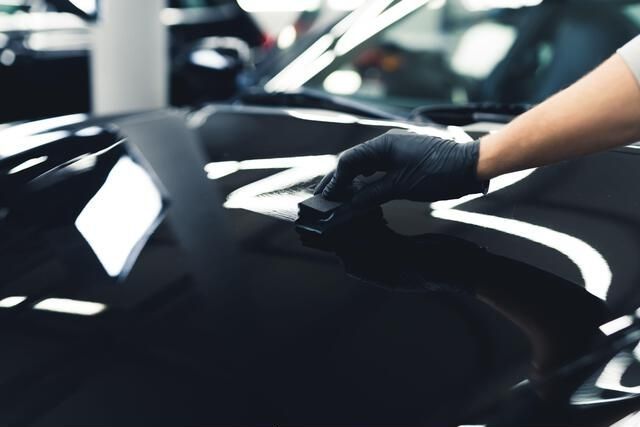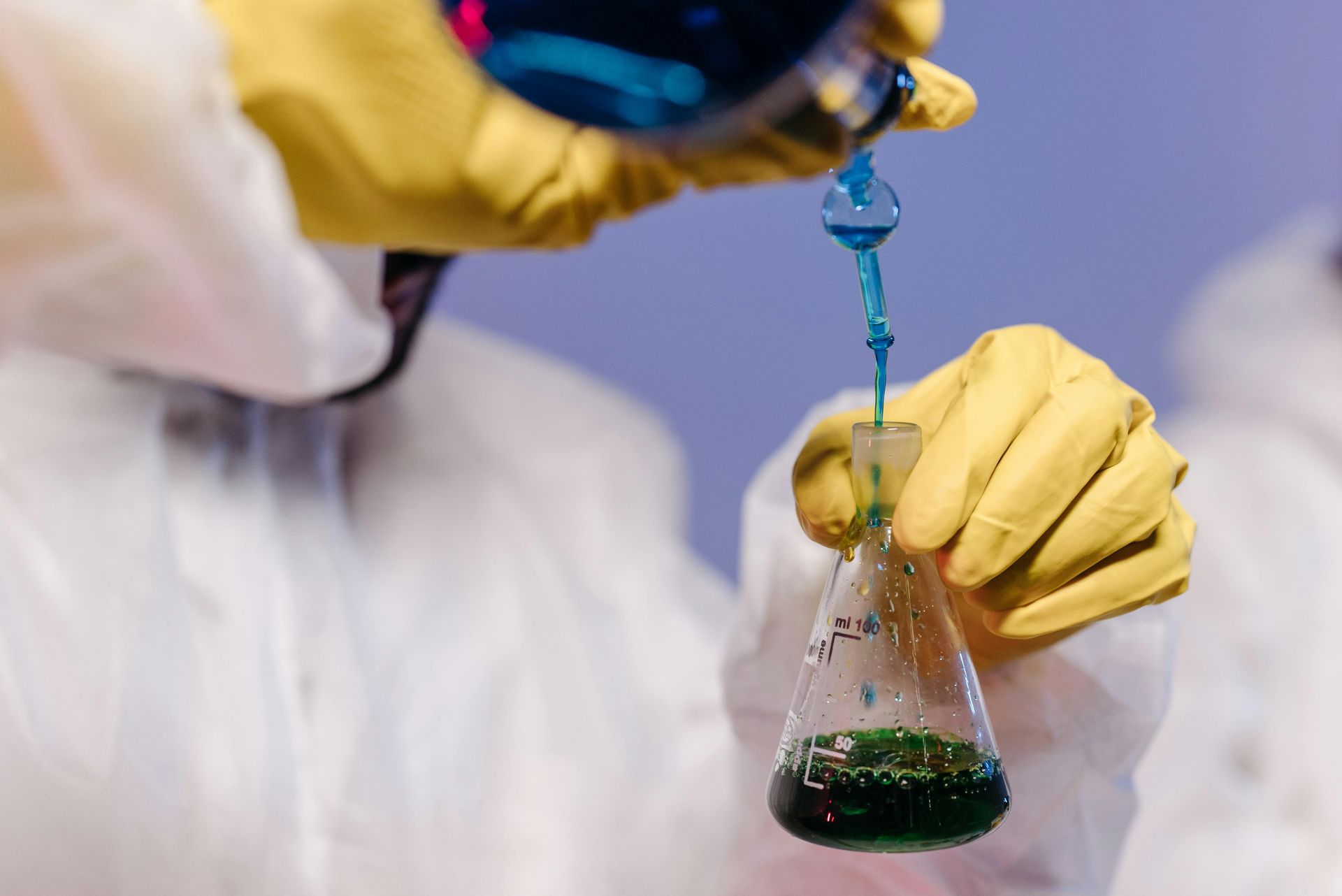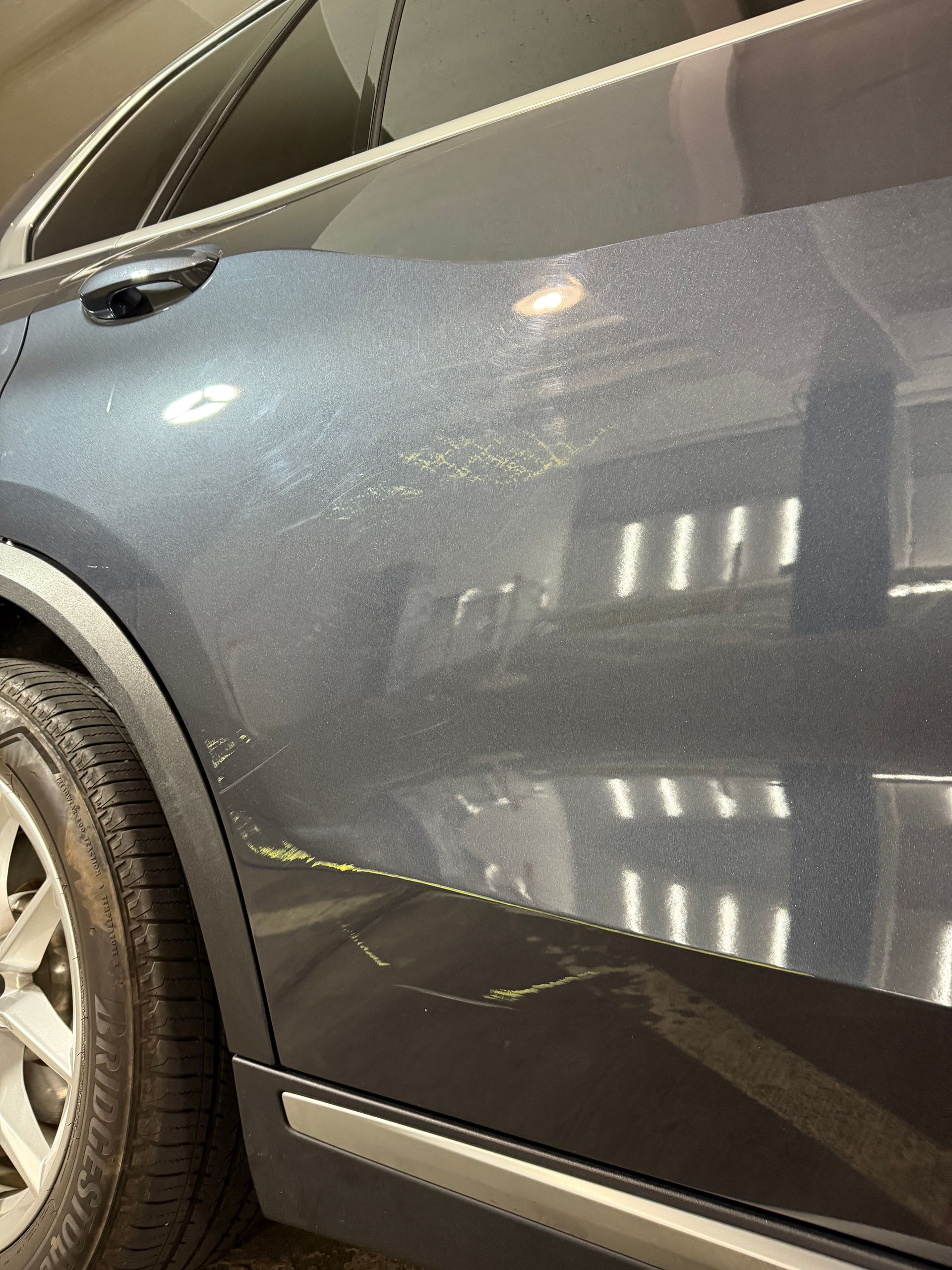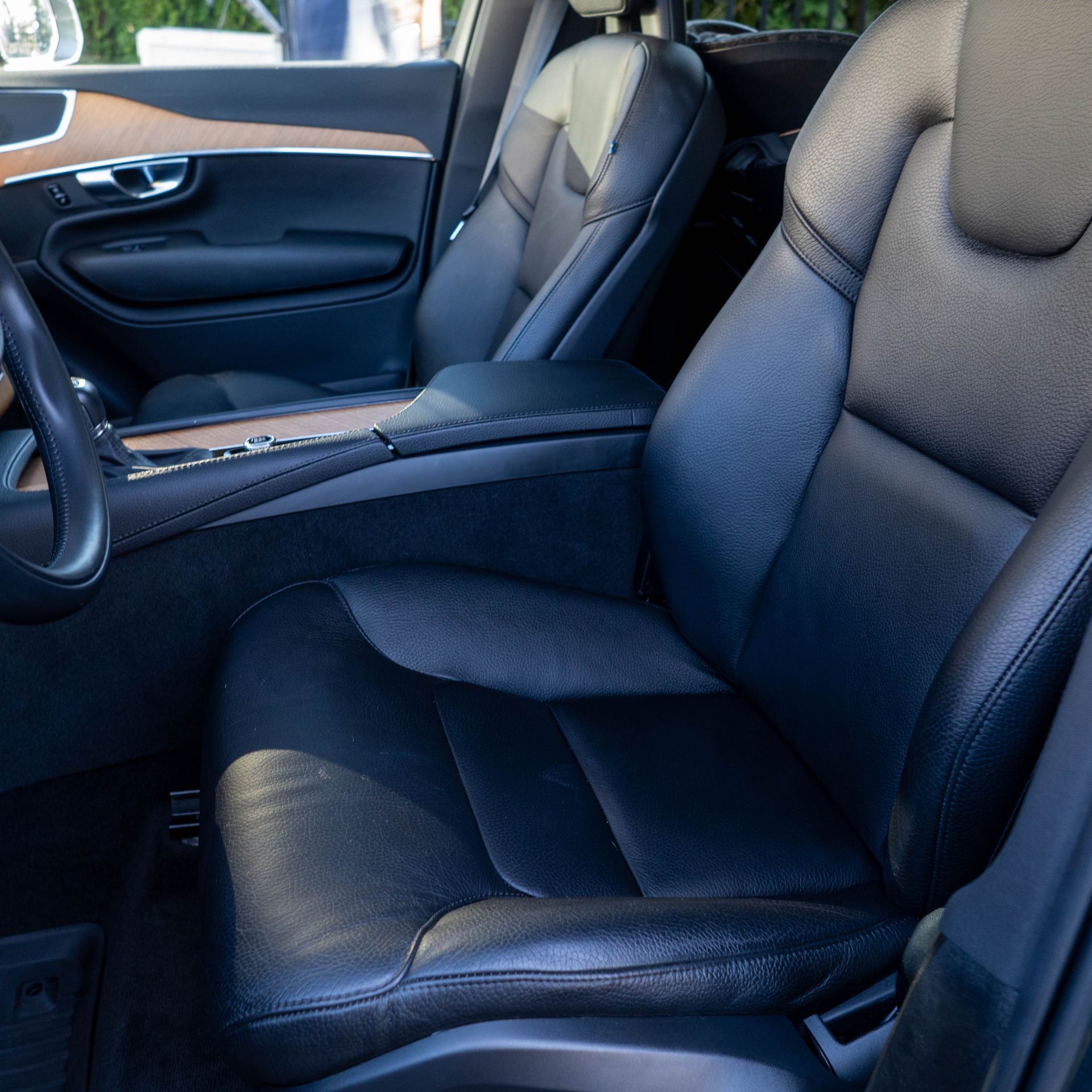Everything You Need to Know About Ceramic Coating in 2024
August 17, 2023

What is Ceramic Coating?
Ceramic coating is an innovative automotive protection method that forms an exceptionally durable glass-like shield for vehicle surfaces when applied. Ceramic formulas are liquid polymer compounds containing silica or other ceramic nanoparticles. During application, these particles bond with paintwork or other automotive surfaces at a molecular level, creating a reinforced protective barrier upon curing.
Ceramic coatings have been utilized commercially for decades, adopted from early aerospace and technology involving plasma vapor deposition of ceramic powders. Ceramic shields demonstrated extraordinary strength against stresses, erosion and temperature extremes. For automotive use, modern ceramic coatings capitalize on silica molecules bonding to surfaces, delivering unrivaled resilience and ease of maintenance.

Benefits for Owners
Superior Appearance - Ceramic forms a smooth, mirror-like layer enhancing paint clarity and depth for a lustrous showpiece finish.
Effortless Cleaning - Coated surfaces repel liquids, effortlessly shedding drops and collected filth for convenient upkeep.
Years of Protection - UV resistance, scratch toughness and contaminant rejection safeguards paint beauty with minimal treatment over multiple seasons.
Increased Value - Gleaming good looks and long-term preservation versus environmental degradation elevates resale prices.
Preparation for Superior Results
Expert preparation at shops like Westchester Auto Detail begins the process right. Technicians thoroughly decontaminate and correct paint to ensure flawless substrates. Their trained ceramicists then precisely apply layer of protective coating across each panel with microfiber applicators. Complete application takes just hours up to a few days as the solution is buffed to a flawless luster. Through careful technique, Westchester Auto Detail consistently delivers magnificent results - a blemish-free shine fortified by ceramic's resilient, bonded barrier. Owners enjoy heightened satisfaction understanding Westchester's professionals preserve their vehicles and investments with a solution delivering supreme performance for years to come.
Have you ever heard of ceramic coating? It's a buzzword that has been gaining popularity in recent years, especially in the automotive industry. But what exactly is ceramic coating and why is it so highly sought after?
Ceramic coating is a protective layer that is applied to the surface of various materials, such as cars, to enhance their durability and appearance. It is made from a liquid polymer that, when applied, bonds with the surface and forms a protective barrier. This technology has been used in various industries for years, but it has recently gained attention in the automotive world due to its numerous benefits.
In this article, we will delve into the world of ceramic coating and explore its benefits, uses, and applications. Whether you're a car enthusiast looking to protect your prized possession or simply curious about this innovative technology, read on to discover everything you need to know about ceramic coating.
Understanding Ceramic Coating
Ceramic coating is an innovative automotive protection method that applies a thin layer of ceramic material onto a vehicle's paintwork using nanotechnology. The nano-ceramic layer is applied as a liquid and forms a strong, permanent bond with the car's surface at the molecular level, creating a glass like, SIO2 protective barrier that shields the paint from external elements once cured. Ceramic coatings are a synthetic (lab made) material made of a silica or quartz polysilazane compound. They can only be removed with machine polishing and normally have a durability that lasts more than 12 months. Because they are harder and more durable than your clear coat they provide extreme resistance to environmental conditions.
How Ceramic Coating Works: The Science Behind Ceramic Coatings
Ceramic coatings have had a significant impact on automotive protection by utilizing SiO2 molecules. They were initially developed by NASA for aerospace and military purposes and have since undergone significant advancements. The process involved advanced technology utilizing Plasma Spray-Physical Vapor Deposition rigs, which used a high-power plasma flame and ceramic powder within a vacuum.
The complex method led to the development of a ceramic shield that can withstand environmental wear, extreme temperatures, vibrations, and stresses over time. This technology is also used to protect important engine components, preventing erosion and wear in challenging conditions.
Ceramic coatings have important functions in naval and aerial defense as they protect battleships and aircraft from rust, wind, and UV rays. In the automotive industry, ceramic coatings offer advantages over traditional solutions. Through the use of Silica Dioxide (SiO2), these coatings form a semi-permanent bond with a vehicle's surface, providing exceptional durability, protection, gloss enhancement, and even self-cleaning properties.
SiO2-based coatings are applied and undergo a curing process, creating a glass-like layer that covers the clear coat. This protective layer effectively guards against dirt, road salt, tree sap, and brake dust, ensuring the vehicle retains its attractive appearance and structural strength.
Benefits Beyond Expectations
Ceramic coatings offer several advantages compared to traditional wax and sealants, making them a popular choice among car enthusiasts and professionals in the auto detailing industry. These benefits surpass what conventional methods can provide, ensuring the long-term preservation of your vehicle's condition.
Unrivaled Paint Protection: Ceramic coatings protect against UV rays, preventing paint oxidation, fading, and discoloration. They also shield against harsh chemicals and environmental contaminants, keeping your car's finish safe.
Elevated Gloss and Appearance: Ceramic coatings enhance the depth and reflectivity of your car's paint, creating a stunning mirror-like finish. Your vehicle's true colors shine through with brilliance.
Effortless Maintenance: The hydrophobic properties of ceramic coatings repel dirt, mud, and grime, making it easy to keep your car clean. Spend less time cleaning and more time enjoying your car's gleaming beauty.
Enhanced Scratch and Swirl Resistance: Ceramic coatings are resilient against fine scratches and swirl marks that occur during washing, keeping your car looking flawless.
Long-Term Protection: Ceramic coatings provide consistent and reliable protection for years, ensuring peace of mind and sustained beauty for your vehicle.
However, what distinguishes ceramic coatings is the support and approval from professionals in the auto detailing industry.
Experts recommend ceramic coatings because of their advanced nanotechnology, which effectively penetrates surfaces to provide a superior level of protection. When more layers of ceramic coating are applied, it strengthens the protective shield on your car, providing defense against minor scratches and exposure to environmental hazards.
Ceramic coatings offer a wide range of benefits, including protection against mud, rain, dirt, oxidation, corrosion, and rust, making them a superior choice to traditional methods. The ability to intensify shine and enhance paint depth adds an additional layer of appeal to a vehicle's exterior. Ceramic coatings offer reduced maintenance and long-lasting protection, making them a practical investment that ensures your car remains in impeccable condition despite the effects of time and the elements.
Application & Installation: A Technical Process
The application of a ceramic coating is a detailed and thorough process that goes beyond typical car care routines. This methodical approach guarantees the effectiveness and longevity of the coating, resulting in a beautiful and long-lasting finish. Here is an overview of the steps involved in the application process:
Vehicle Preparation: Proper preparation is essential for achieving a flawless ceramic coating on a vehicle. This process includes a thorough hand washing, careful use of iron remover and clay bar for decontamination, and the removal of environmental fallout from every part of the vehicle. The preparatory phase is important for ensuring that the ceramic coating bonds effectively to the surface.
Paint Correction: Paint correction is another important factor in maintaining the durability of ceramic coatings. This specialized service is provided by skilled professionals to address imperfections such as swirl marks, scratches, and haze on the paintwork. Different levels of paint enhancement are used to meet the specific requirements of each vehicle. The thoroughness of this process ensures that the paintwork is in optimal condition before the ceramic coating is applied. The quality of the surface affects the adhesion of the coating, which in turn impacts its longevity.
Application: The application of the ceramic coating is a crucial step in the installation process. Installation specialists carefully apply ceramic coating to various parts of the vehicle, including the paintwork, trim, wheels, and glass. This step requires precision and attention to detail, as each panel is thoroughly inspected and leveled to achieve a seamless finish. The application of the coating has a significant impact on its durability and effectiveness, making this step crucial.
Caring for Your Ceramic-Coated Car
Proper aftercare ensures that your ceramic-coated car maintains its stunning appearance for years:
Washing and Maintenance Guidelines: While the need for frequent washing diminishes, regular cleaning is still necessary. Use pH-neutral car wash solutions to prevent damaging the coating.
Recommended Cleaning Products: Opt for microfiber towels and gentle cleaning products to avoid scratching the coating.
Periodic Inspections and Maintenance: Regularly inspect your car's coating for any signs of damage or wear. Professional maintenance and touch-ups might be necessary over time.
Separating Fact from Fiction
Dispelling common myths surrounding ceramic coating:
Absolute Damage Resistance: Ceramic coatings provide great scratch resistance, but they are not completely resistant to all types of damage.
No More Car Washing: Periodic washing is necessary to maintain the effectiveness of the coating, even though water and dirt may slide off more easily.
Application Equals Protection Forever: Ceramic coatings offer long-lasting protection, but they require regular application for continued effectiveness. Regular care and maintenance are necessary for preserving their benefits.
Ceramic coating has had a significant impact on the way car owners protect and maintain their vehicles. By understanding the science behind ceramic coatings, the benefits they provide, and the necessary care, individuals can make an informed decision on whether ceramic coating is suitable for their car. With proper application and maintenance, a car with ceramic coating can maintain its shine and luster for an extended time, resisting the effects of the environment and attracting attention wherever it goes.








